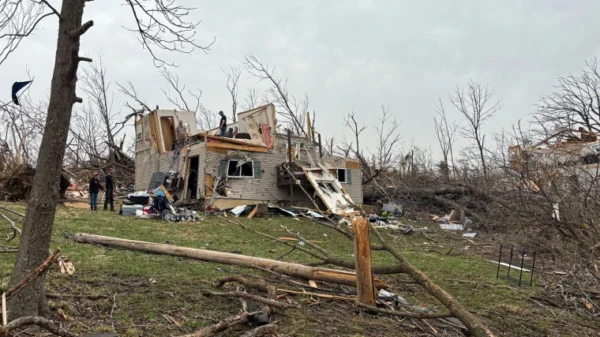Typhoon Kong-rey Expected to Downgrade After Potential Impact on Taiwan
Typhoon Kong-rey, a powerful storm forming over the western Pacific, is forecasted to downgrade to a tropical storm as it approaches Taiwan. Although it may lose some intensity, it could still bring heavy rainfall, strong winds, and potential flooding to Taiwan and neighboring regions. Asia has already been facing a challenging weather season, with multiple storms impacting infrastructure, agriculture, and safety in various countries.
Forecast Predicts Downgrade, but Risks Remain
Meteorologists tracking Typhoon Kong-rey expect it to weaken as it nears Taiwan, possibly downgrading to a tropical storm before or shortly after landfall. Despite the forecasted downgrade, the storm’s lingering effects are still cause for concern. Heavy rainfall could result in flash floods and landslides, particularly in Taiwan’s mountainous areas, where steep terrain increases the risk of erosion and flood damage. Wind speeds, although less intense than a full typhoon, may still cause disruptions to transportation, power lines, and structures.
Asia’s Weather Season Faces Increased Intensity
Typhoon Kong-rey’s arrival adds to an already intense weather season in Asia, with several typhoons, monsoon rains, and tropical storms impacting the region over the past few months. Countries including Japan, the Philippines, and China have experienced severe weather events, leading to significant infrastructure damage and, in some cases, loss of life. Climate experts suggest that warmer ocean temperatures may be contributing to the frequency and intensity of storms, leading to prolonged and unpredictable weather patterns across the region.
Local governments across affected areas are now preparing emergency responses, coordinating with agencies to ensure the safety of residents. Taiwan has also issued alerts, advising citizens in vulnerable areas to be ready for potential evacuations and to avoid unnecessary travel during the storm.
Preparedness and Precautionary Measures
In anticipation of Typhoon Kong-rey’s effects, Taiwanese authorities are taking precautionary steps, such as reinforcing infrastructure in vulnerable areas, coordinating with disaster response teams, and preparing evacuation centers. The government has also advised fishing vessels to remain docked and residents to secure property to minimize potential damage. Public alerts have been issued to encourage people in high-risk areas to remain indoors and stay informed about the storm’s progress.
Conclusion: The Unpredictable Nature of Typhoon Season
Typhoon Kong-rey’s anticipated downgrade does little to ease concerns in Asia, as even tropical storms can bring significant rainfall, wind, and flooding. With the region already experiencing a challenging storm season, governments and residents remain on high alert. Typhoon Kong-rey serves as a reminder of the ongoing risks that typhoon season brings to Asia’s coastal and island nations, where proactive preparation is crucial to minimizing impact and ensuring public safety.
Regional Collaboration for Disaster Response
Typhoon Kong-rey has highlighted the importance of regional collaboration in disaster preparedness and response, as countries across Asia brace for its potential impact. Neighboring countries like Japan and the Philippines are monitoring the storm closely, sharing real-time meteorological data and updates with Taiwan. This cooperation is critical in improving response times and helping local authorities make informed decisions that can save lives and reduce damage. Regional organizations, including the ASEAN Coordinating Centre for Humanitarian Assistance, are also on standby to provide support if needed, further emphasizing the collective effort required to handle severe weather events effectively.
































